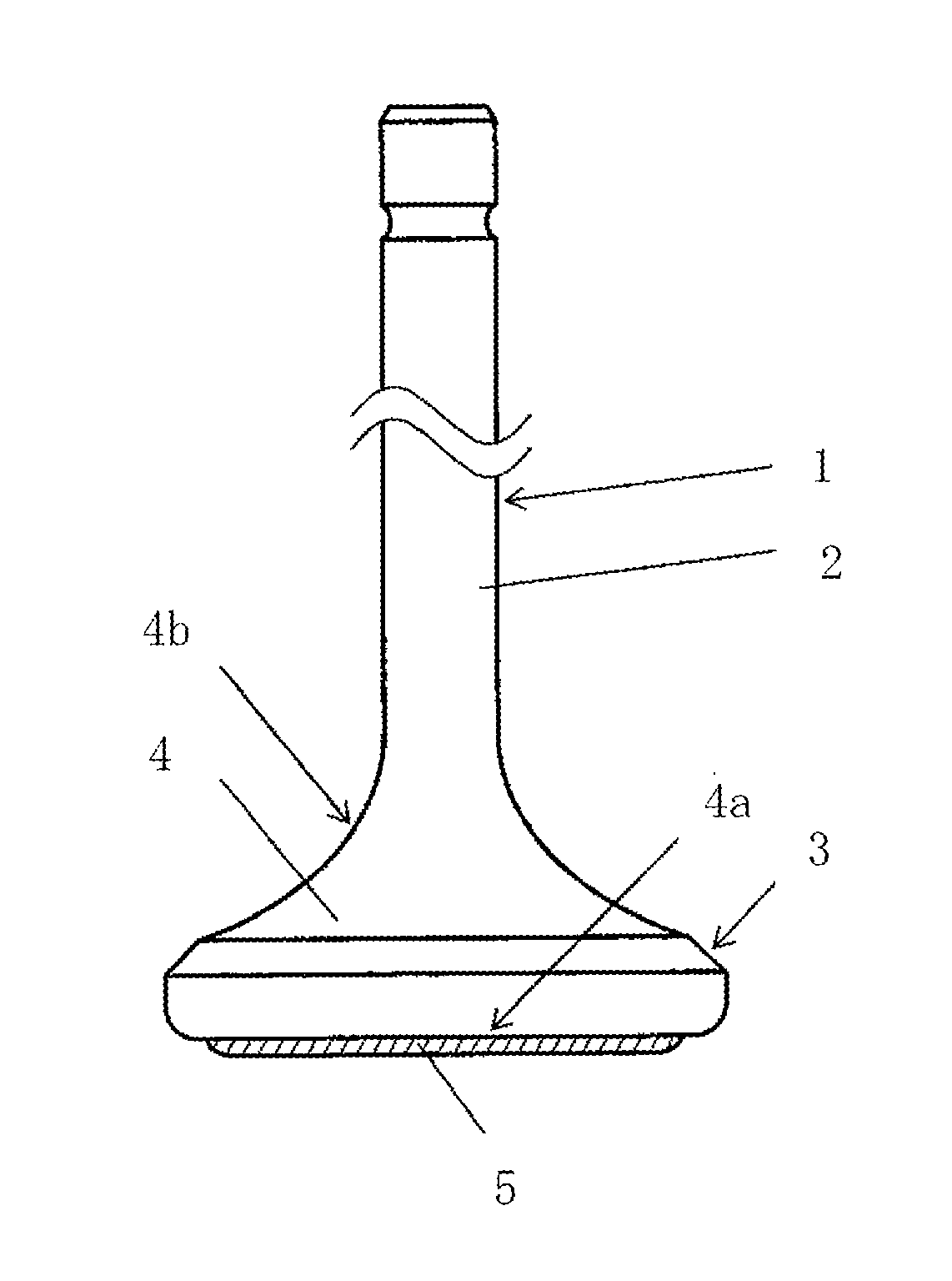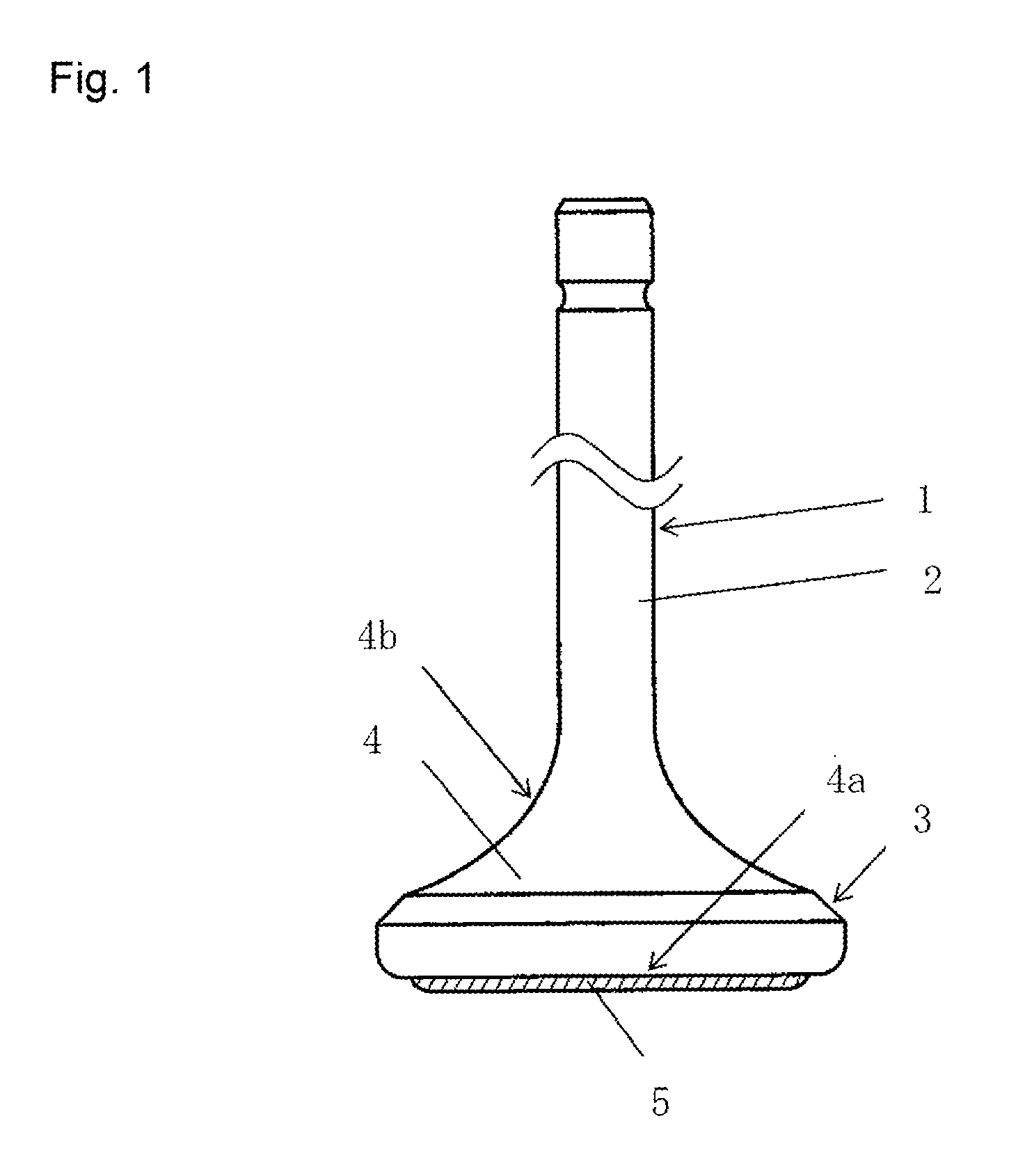Ni-Cr-Co-based alloy having high-temperature corrosion resistance, and poppet valve surface-modified with the same
a technology of nicrco-based alloys and poppet valves, which is applied in the direction of valve housings, machines/engines, mechanical equipment, etc., can solve the problems of short service life of valves, insufficient chemical properties, and severe corrosion of high-temperature environments, so as to improve the alloy's high-temperature corrosion resistance and reduce the melting point of alloy materials. , the effect of lowering the impact valu
- Summary
- Abstract
- Description
- Claims
- Application Information
AI Technical Summary
Benefits of technology
Problems solved by technology
Method used
Image
Examples
examples
[0037]Produced were an ingot of an alloy prepared / element-blended as described above according to each example of the present invention, and an ingot of an alloy of each comparative example. In accordance with respective methods described below, the Charpy impact value of each of the examples was measured, and a high-temperature corrosion test thereof was made. Each alloy powder produced by an atomizing method was used to evaluate properties of a coat obtained by subjecting the powder to spraying application.
[0038](1) Charpy impact test: An electric furnace was used to heat and melt 100 g of a parent metal having each of the above-mentioned alloy compositions to about 1600° C. in an argon gas flow. The resultant was cast into a shell mold. In this way, the melted ingot was mechanically worked into a specimen (without any notch) described in JIS Z 2242: 2005. A Charpy impact tester was used to make an impact test of the specimen in accordance with JIS Z 2242: 2005 to measure the impa...
PUM
| Property | Measurement | Unit |
|---|---|---|
| temperature | aaaaa | aaaaa |
| temperature | aaaaa | aaaaa |
| erosion depth | aaaaa | aaaaa |
Abstract
Description
Claims
Application Information
 Login to View More
Login to View More - R&D
- Intellectual Property
- Life Sciences
- Materials
- Tech Scout
- Unparalleled Data Quality
- Higher Quality Content
- 60% Fewer Hallucinations
Browse by: Latest US Patents, China's latest patents, Technical Efficacy Thesaurus, Application Domain, Technology Topic, Popular Technical Reports.
© 2025 PatSnap. All rights reserved.Legal|Privacy policy|Modern Slavery Act Transparency Statement|Sitemap|About US| Contact US: help@patsnap.com



